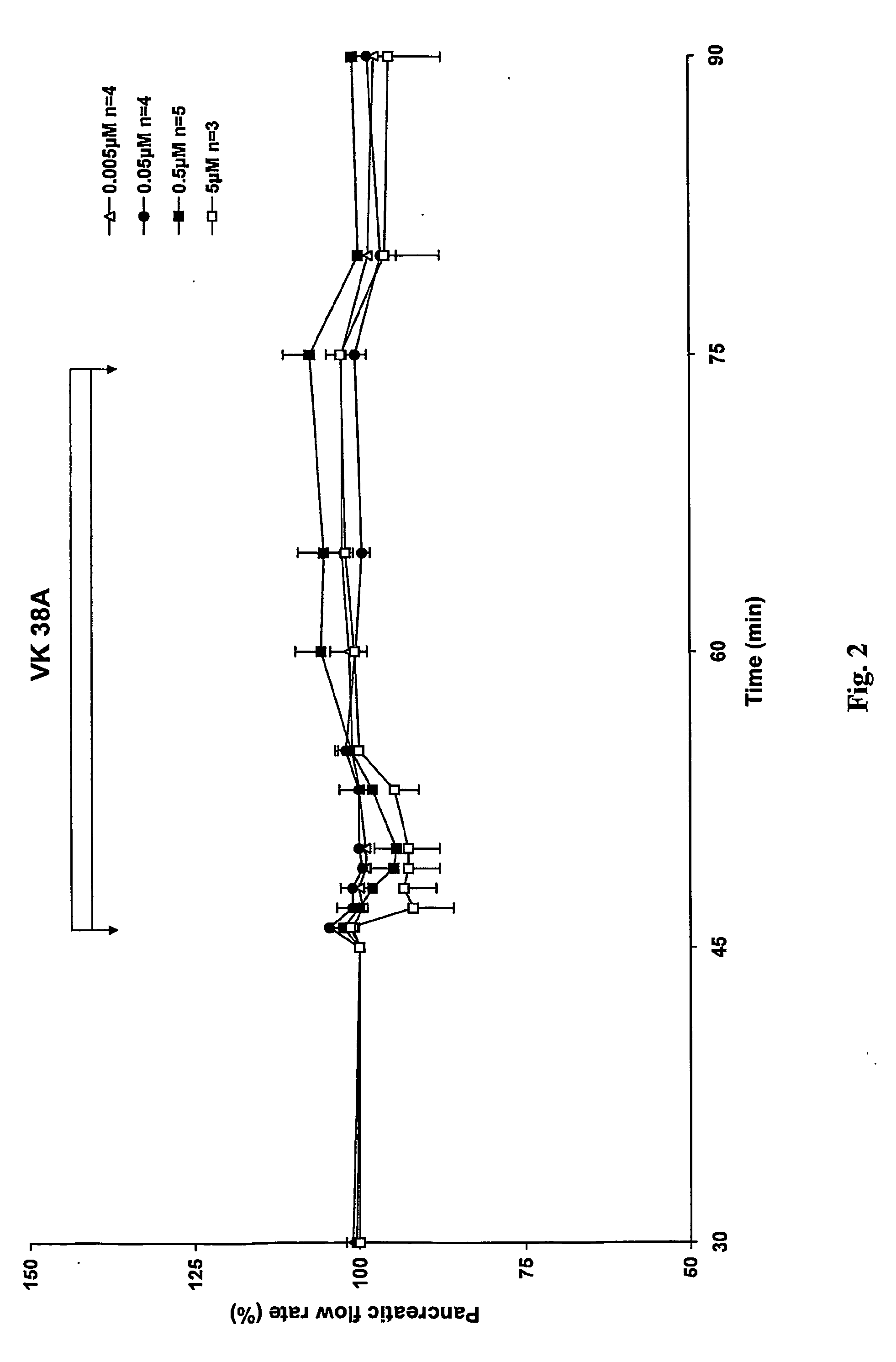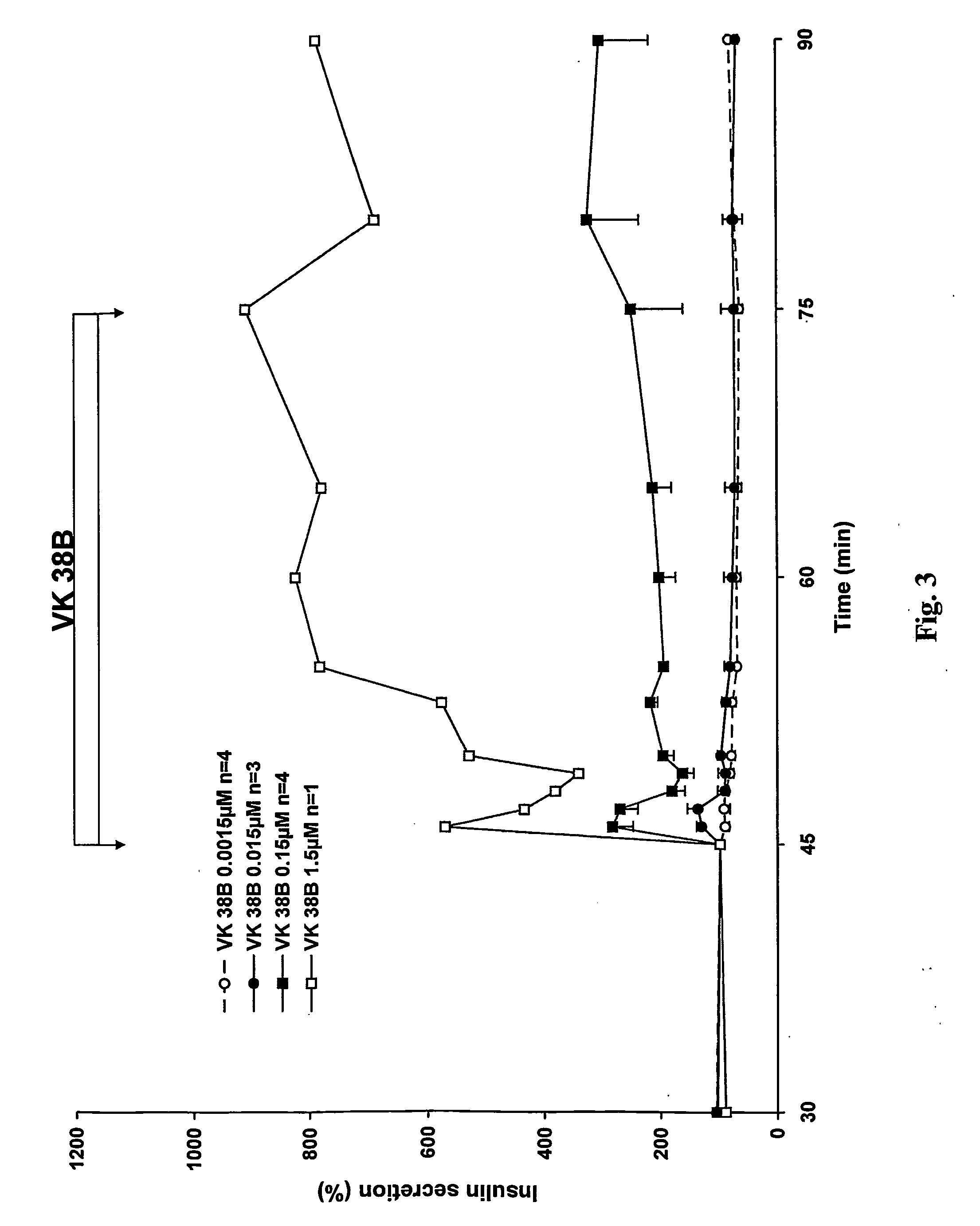Antidiabetic 2-substituted-5' -O- (1-Boranotriphosphate) adenosine derivatives
a technology of antidiabetic compounds and derivatives, which is applied in the field of new antidiabetic compounds, can solve the problems of diabetic complications, amputation, and diabetes, and achieve the effects of reducing pancreatic flow rate, increasing vascular resistance, and increasing vascular resistan
- Summary
- Abstract
- Description
- Claims
- Application Information
AI Technical Summary
Benefits of technology
Problems solved by technology
Method used
Image
Examples
example 1
General Procedure for the Preparation of Derivatives of adenosine-5′-O-(1-boranotriphosphate) (According to Scheme A)
Protected nucleoside 2 (0.5 mmol) was dissolved in dry CHCl3 (7 mL) in a flame-dried, two-neck flask under N2. (iPr)2NEt (0.11 mL, 1.3 eq) was added at room temperature and the solution was stirred for 30 min. The mixture was cooled to 0° C. and [(iPr)2N]2PCl (148 mg, 1.1 eq), dissolved in CHCl3 (2 mL), was slowly added with a syringe (step a), to give derivative 3. The resulting solution of derivative 3 was stirred at 0° C. for 2 h followed by the addition of a 1 M solution of H2P2O7−2 (+HNBU3)2 in DMF (0.75 mL, 1.5 eq) (step b), to produce compound 4. This solution was kept at room temperature for additional 4 h and then cooled to 0° C. A 2 M solution of BH3—SMe2 complex in THF (2.52 mL, 10 eq) was added (step c). After 15 min of stirring at room temperature, deionized water (8 mL) was added and the resulting mixture was stirred for 1 h (step d) and then freeze-dr...
example 2
Preparation of adenosine-5′-O-(1-boranotriphosphate)
The title compound, herein identified as ATPαB [VK 39], was obtained according to the procedure in Example 1 starting from tetrabenzoyladenosine 8, in 19% yield.
example 3
Preparation of 2-methylthioadenosine-5′-O-(1-boranotriphosphate)
The title compound, herein identified as 2-SMe-ATPαB [VK 38], was obtained according to the procedure in Example 1 starting from 2-thiomethyl-(2′,3′-O-methoxymethylidene)adenosine, in 38% yield.
PUM
| Property | Measurement | Unit |
|---|---|---|
| insulin resistance | aaaaa | aaaaa |
| resistance | aaaaa | aaaaa |
| concentrations | aaaaa | aaaaa |
Abstract
Description
Claims
Application Information
 Login to View More
Login to View More - R&D
- Intellectual Property
- Life Sciences
- Materials
- Tech Scout
- Unparalleled Data Quality
- Higher Quality Content
- 60% Fewer Hallucinations
Browse by: Latest US Patents, China's latest patents, Technical Efficacy Thesaurus, Application Domain, Technology Topic, Popular Technical Reports.
© 2025 PatSnap. All rights reserved.Legal|Privacy policy|Modern Slavery Act Transparency Statement|Sitemap|About US| Contact US: help@patsnap.com



